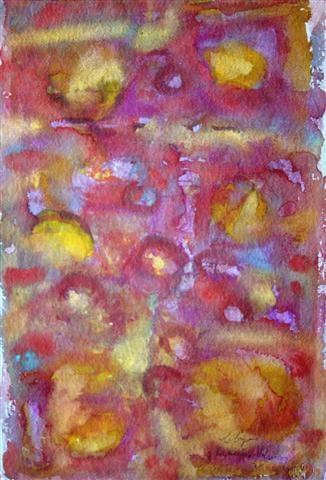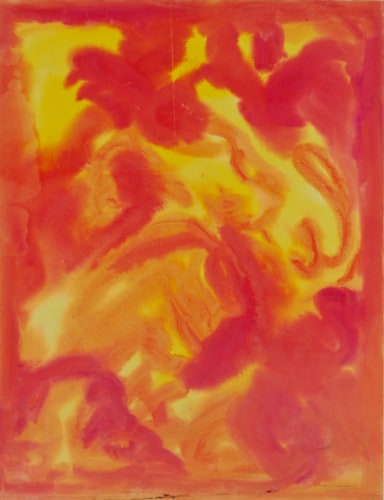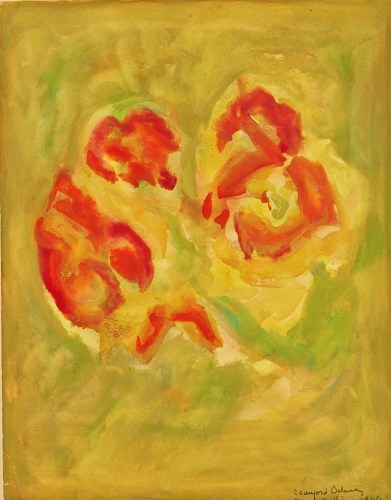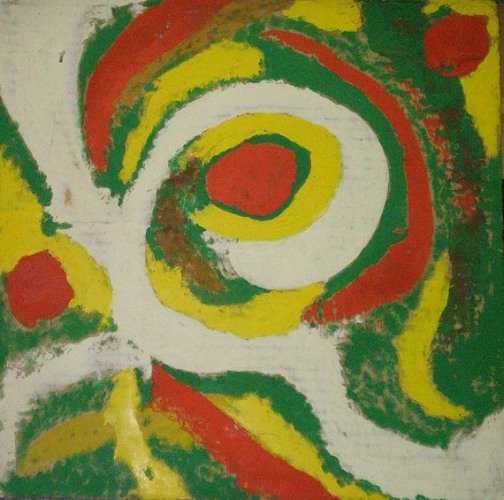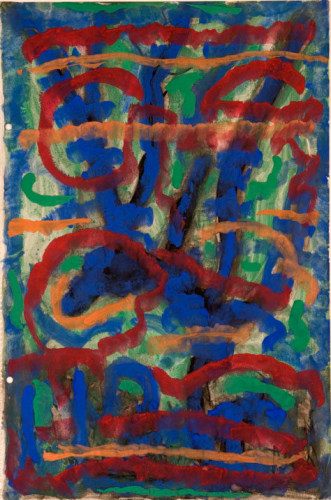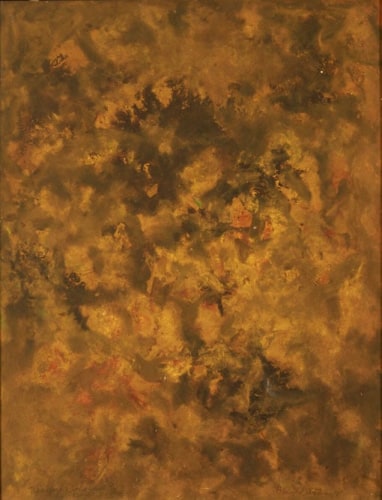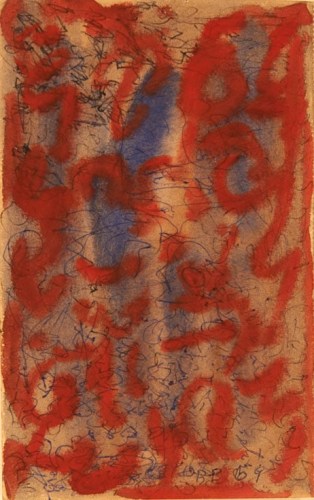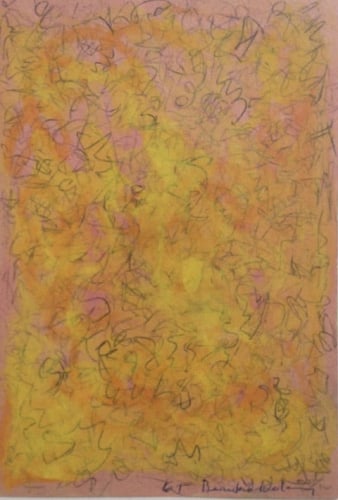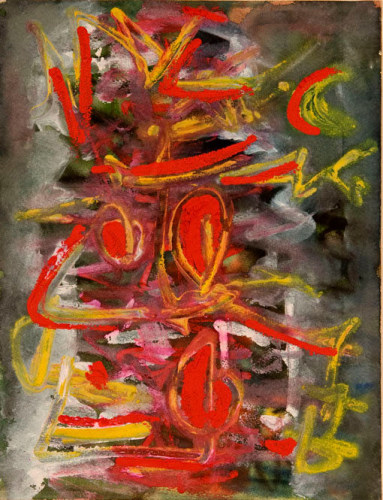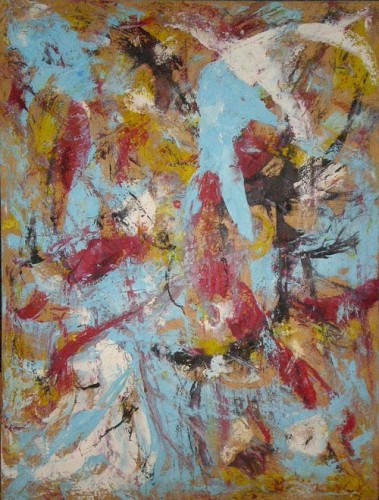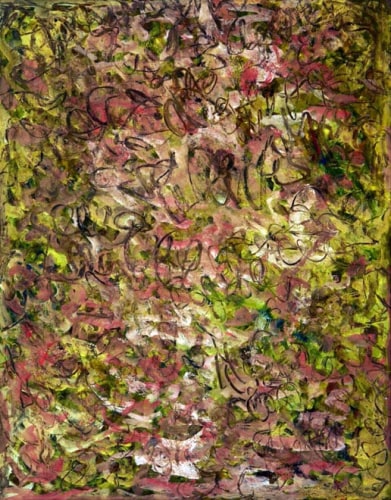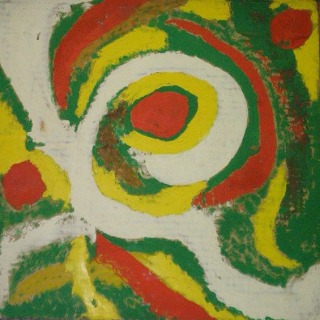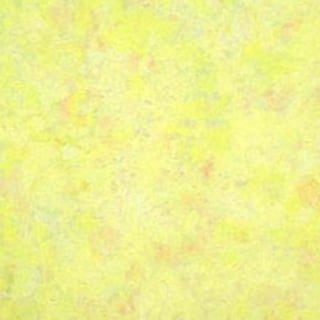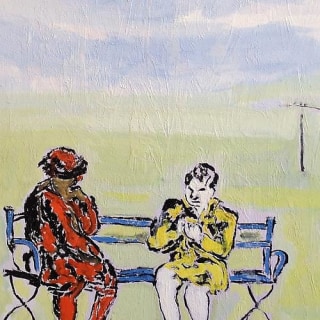
Beauford Delaney was born in Knoxville, Tennessee in 1901 and died in Paris in 1979 in Saint Anne’s Hospital for the Insane, after four years of anguished confinement. In between he had a life that was both jubilant and troubled, afflicted by a lifetime of poverty, racial bigotry, alcoholism, a series of mental breakdowns sound-tracked by the schizophrenic buzz of voices in his head, and a homosexuality that he was never completely comfortable with, both because he lived in homogenous, homophobic times and because he himself disapproved of it, harrowed by his deeply ingrained Christian beliefs. James Baldwin wrote the introduction to Delaney’s exhibition at the Galerie Lambert in Paris in 1964 saying, “the darkness of Beauford's beginnings, in Tennessee, many years ago, was a black-blue midnight indeed, opaque and full of sorrow. And I do not know, nor will any of us ever really know, what kind of strength it was that enabled him to make so dogged and splendid a journey." Baldwin, at another time, had offhandedly described the artist to David Leeming, Delaney’s perceptive, sympathetic biographer, as a cross between “Br’er Rabbit and Saint Francis of Assisi,” and indeed, many have characterized him as amiable, gentle. Henry Miller claimed that Delaney was “as close to holiness as an artist can be,” with the patience of a saint. As for his Br’er Rabbit side, there are some black and white close-ups from around 1970 taken by Emil Cadoo, an African-American photographer and fellow exile, that reveal a playful Delaney, his smile broad, full of mischief.
The jubilation, “the splendid journey,” came in part from his critical success. In his lifetime, he exhibited in museums throughout Europe and the United States: the Musée d’Art Moderne, Paris; Musée Cantonal des Beaux-Arts, Lausanne; the Carnegie International, Pittsburgh; the Whitney Museum of American Art and the Studio Museum in Harlem, both in New York, among others, but his shows never made him financially independent. His essential, irrevocable triumph, however, came from the paintings themselves, from his deep commitment to his practice and his absolute will to persevere despite his desperation and the intermittent disintegrations that made it difficult, at times, for him to work at all. Painting was always his salvation.
Of ten children, he was one of only four to survive into adulthood. His father was the Reverend Samuel Delaney, a Methodist minister, and his mother was Delia Johnson Delaney, a strict, imposing, religious woman who was a formative influence in his life. Delaney, a gifted, sensitive, child, gravitated toward music and art from his earliest years, his talents quickly recognized by the town’s leading painter, Lloyd Branson, an American Impressionist. Branson was white and hardly a liberal, but offered to teach Delaney who, in exchange, worked for him as a porter. It was Branson who first taught him about the importance of light in painting, a lesson Delaney never forgot. Encouraged by his teacher, Delaney left for Boston to continue his studies more formally when he was 23. Six years later, in 1929, he arrived in New York, soon after the stock market crash, the country bracing itself for the Great Depression. But for the youthful Delaney, they were nonetheless hopeful, exhilarating years. He worked odd jobs when he could get them, attended classes at the Art Students League where he studied with Thomas Hart Benton and John Sloan, and reveled in the fast-paced city’s prodigious array of cultural offerings. At first, Harlem was the magnet, then bohemian Greenwich Village where he became a familiar figure during the 1930s through the postwar years. An habitué of its cafes and salons, Delaney showed frequently in midtown and downtown art galleries and public exhibitions, earning recognition for his portraits, his urban landscapes, his street scenes of the poor and unemployed, for his innovative compositions and bold, intuitive choice of colors, which owed something to the first group of brilliant American Modernists, among them Marsden Hartley and Stuart Davis. His circle of friends and acquaintances in those years included writers, composers, actors, critics, and artists who would define the era, such as Henry Miller, a lifelong friend and staunch supporter, Anaïs Nin, William Saroyan, Carl Van Vechten, Brooks Atkinson, Paul Jenkins, Alfred Stieglitz and Georgia O’Keefe.
He went to Paris in 1953 when he was 52 years old, for what he thought would be a visit. He remained until his death a quarter century later, joining many other black Americans who found a more welcoming milieu in Paris and greater personal and creative freedom, including writers Richard Wright and James Baldwin, his onetime protégé, later spiritual son—as Baldwin designated himself—and intimate friend. A minor celebrity for a time in this society of American and French artists and literati, he befriended Colette, Jean Genet, James Jones and so many others. Delaney was charming, if at times erratic, and extraordinarily generous, offering to share what little he had, indifferent to possessions. A columnist once tagged him as the painter-writer-philosopher, Beauford Delaney, a familiar and engaging personage frequently seen holding court in the various cafés of Montparnasse. In a March 14, 1972 article in the International Herald Tribune about him, he said he had come to Paris “for a peep, and there was an awful lot to peep at…” So he stayed. And Paris provided Delaney with a degree of respite from racial and sexual biases, from the innate sense of otherness and isolation that plagued him, exacerbated by his psychological ailments. Although punctuated by crises, they were productive years, and the paintings kept coming, from portraits to landscapes to pure abstractions that exploded into luminous displays of light and painterly color.
Delaney has been the subject of several exhibitions since his death. Invariably lauded as a great but neglected painter, an artist’s artist, he was then neglected anew, although this has changed of late, his work now sought after by collectors and museums, in part, no doubt, because of these often cited exhibitions. One likely reason for his former lack of reputation in his native land was his absence from it, leaving for Paris at a pivotal moment, just when American art and New York became contemporary culture’s hub, the Abstract Expressionists its reigning heroes, the Pop artists about to be. Another might have been that while African American artists became far more visible from the mid-1970s onward (as did other non-white and women artists), they were activists for the most part with a sociopolitical agenda, vested in identity issues and the bitter inequities of racism. Those who were not assertively ideological were relegated to the sidelines, as painting itself was for a time. But criteria have changed once again, and Delaney can now be seen through a less partisan, less narrow lens, one in which modernist painting has also been reappraised. He stubbornly resisted categorization and did not want to be labeled a Negro artist (and certainly not a gay one), although today, ethnicity and sexual orientation, for many, are integral to their practice. That said, his paintings are nonetheless heavily populated with people of color, his portraits most often of African American luminaries, many of whom were his friends, the resplendent Marian Anderson of 1965 for one, or the haunting, transfigured Ella Fitzgerald of 1968 for another. He was also fiercely proud of black achievement, proud of his celebrated friends, and proud to show with Jacob Lawrence, Romare Bearden and other accomplished black artists, advancing the cause of African Americans in his own way.
The 1940s saw Delaney’s increasing infatuation with yellow, a color that would become his signature hue, emblematic of the light that was his touchstone, his escape. It was the color of the sun, the south, majesty, spirituality and apotheosis. Like an Icarus bewitched by incandescence, or van Gogh’s heliotropic sunflowers, Delaney basked in its transformative, transcendent radiance. He was more than ever immersed in the paintings of Monet, Bonnard, Cézanne and Van Gogh, of the Fauves, Matisse and Picasso, artists whose influences can be clearly seen in Delaney’s works along with Pollock and Rothko. In Paris, in France, he acquired a deeper understanding of light, color, mark making and of European modernism and modernist abstraction. Yellow is lavishly present in his Paris paintings, in both the portraits and the abstractions, discussed by Richard J. Powell in his excellent essay for the multiple-venue Delaney exhibition, “The Color Yellow,” that originated at the High Museum in Atlanta in 2002.Yellow, a difficult color, presented little apparent difficulty for Delaney, his handling of it seemingly effortless, the effects he achieved with it richly nuanced. He often used yellow as both the surface color and an under color (much the way, say, that Titian or Rembrandt applied vermilion as the ground), creating a remarkable freshness of tonality and a luminosity that is perhaps the most compelling attribute of these paintings.
In his new Parisian environment, his work became more expansive, assured, and complex, the abstractions more tactile, textured, lyrical. In reproductions, inevitably, their materiality and brilliant, physical presence are diminished, his deft, thickly applied brushwork flattened, the play of light stilled, a vibrancy restored in their presence....
This was the last period in which he could paint with any semblance of continuity, producing a great number of remarkable works in a series of intuitive bursts and breakthroughs. Miller, in another accolade to his friend, said “you are an artist through and through, not only in the medium of paint, but in the medium of life, which is more important.”
Several years after his beloved friend’s death, in 1985, and two before his own, Baldwin described the impact of Delaney on his life, saying he was "the first living proof, for me, that a black man could be an artist… He became, for me, an example of courage and integrity, humility and passion. An absolute integrity: I saw him shaken many times and I lived to see him broken but I never saw him bow." And, in his earlier Galerie Lambert essay, he concluded with this: "Perhaps I should not say, flatly, what I believe – that he is a great painter – among the very greatest; but I do know that great art can only be created out of love, and that no greater lover has ever held a brush."
Buried in Thiais, France, Beauford Delaney’s epitaph simply states: I am home.
Lilly Wei, curator
Levis Fine Art is proud to represent a significant body of his artwork with the fine provenance of Delaney's Estate and the Estate of Solange du Closel, Delaney's greatest patron.

